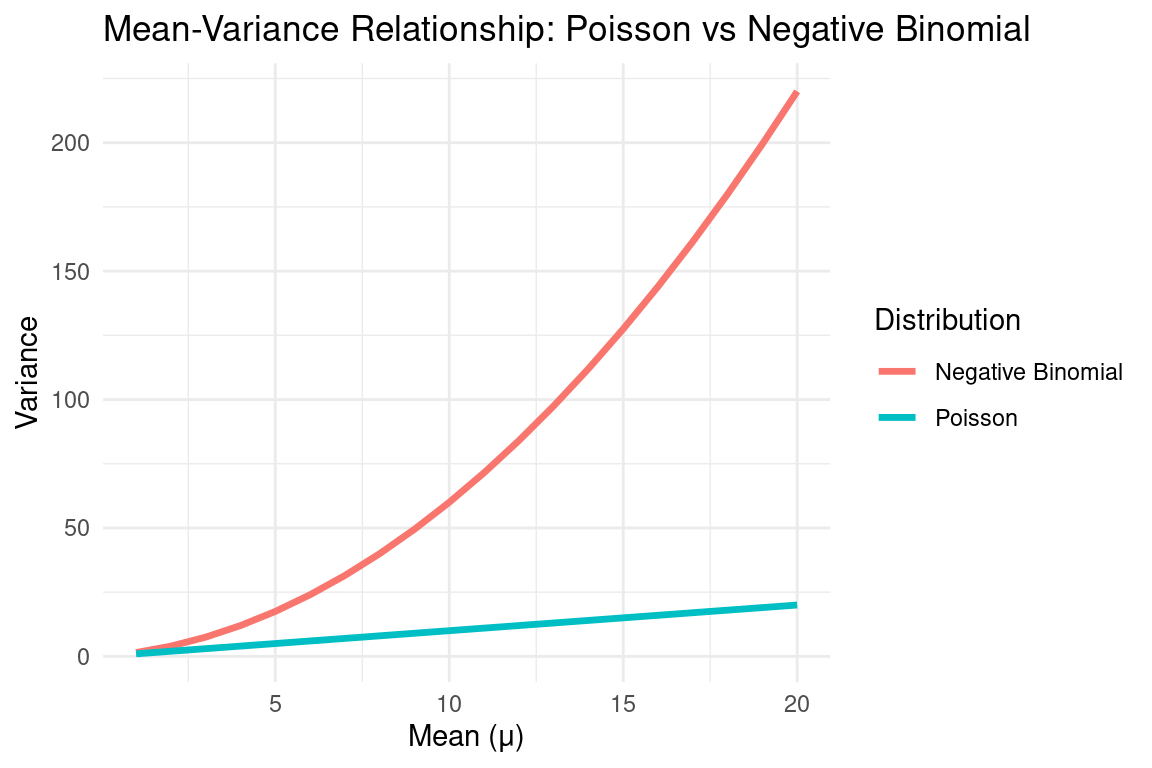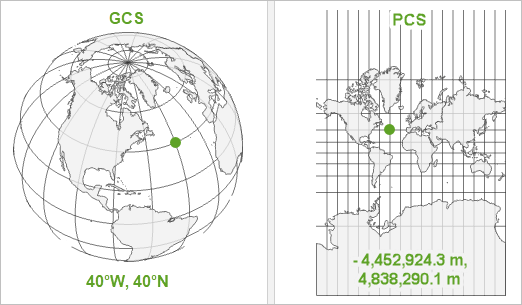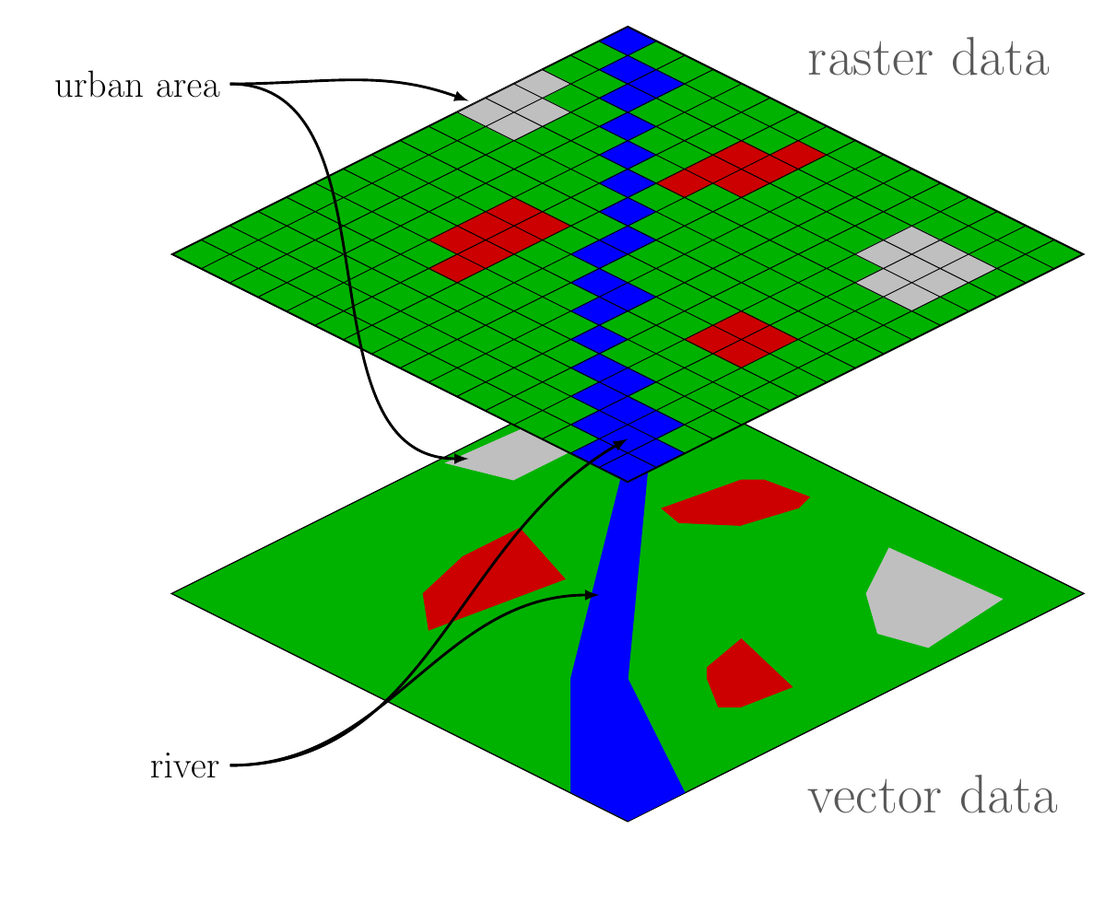| Comparison of Random Effects vs. Marginal Models | ||
|---|---|---|
| Feature | Random Effects Model | Marginal Model (GEE) |
| Interpretation | Subject-specific | Population-averaged |
| Handles Overdispersion | Yes (via latent effects) | Yes (via robust SE) |
| Computational Complexity | Higher | Lower |
Exploratory analysis
Model-based Geostatistics for Global Public Health
Lancaster University
Overview of topics
- How to explore relationships with count data
- How to use a non-spatial model for mapping
- How to handle spatial data in R
Example: Riverblindness in Liberia
- How to explore relationships with count data (binary and aggregated counts)?
- How to model non-linear relationships?
- How to use a non-spatial model for mapping?
Overdispersion in Count Data
- What is overdispersion?
- Occurs when the variance of count data exceeds the mean.
- Violates the Poisson assumption:
\[ \text{Var}(Y) = \mathbb{E}(Y). \]
- Why does it matter?
- Standard models (e.g., Poisson regression) underestimate uncertainty.
- Leads to overly optimistic confidence intervals and p-values.
Example: Overdispersion in Correlated Binary Data
- Consider \(Y = \sum_{i=1}^n X_i\), where \(X_i\) are correlated binary variables.
- If \(X_i\) are independent, \(Y\) follows a Binomial distribution: \[ \mathbb{E}(Y) = np, \quad \text{Var}(Y) = np(1-p). \]
- If \(X_i\) are correlated, the variance increases:
\[ \text{Var}(Y) = np(1-p) + \sum_{i \neq j} \text{Cov}(X_i, X_j). \]
- This leads to overdispersion.
Example: Negative Binomial Distribution
A common solution for overdispersed count data.
Extends the Poisson distribution by introducing a dispersion parameter \(\alpha\):
\[ \mathbb{E}(Y) = \mu, \quad \text{Var}(Y) = \mu + \alpha \mu^2. \]When \(\alpha = 0\), it reduces to Poisson.
Random Effects Interpretation:
- The Negative Binomial can be interpreted as a Gamma-Poisson mixture.
- The Poisson mean \(\mu\) is drawn from a Gamma distribution, introducing extra variability.

Random Effects Models for Overdispersion
- Overdispersion often arises due to unobserved heterogeneity.
- A solution is to introduce random effects that account for latent variability.
- Random Intercept Model:
\[ Y_{ij} \mid Z_i \sim \text{Binomial}(p_{ij}), \quad \log\left\{\frac{p_{ij}}{1-p_{ij}}\right\} = \beta_0 + d_{ij} \beta_1 + Z_i. \]
- \(Z_i \sim \mathcal{N}(0, \sigma^2)\) captures between-group variability.
- Leads to extra variability in counts, addressing overdispersion.
- Connection to Negative Binomial:
- If \(Z_i\) follows a Gamma distribution instead of Normal, the model is equivalent to a Negative Binomial.
Marginal Models for Overdispersion
An alternative to random effects models is using marginal models.
Instead of modeling subject-level variation, these models estimate population-averaged effects.
Generalized Estimating Equations (GEE):
- Does not assume a specific distribution for random effects.
- Uses a working correlation matrix to account for within-group dependence.
- Robust standard errors help correct for overdispersion.
Choosing Between Models
Example 1
- A clinical trial measuring blood pressure at multiple time points for patients in different hospitals.
- Why Use Random Effects?
- Each patient has their own baseline blood pressure that varies.
- A random intercept accounts for individual differences.
- If hospitals have different treatment protocols, a random hospital effect can be included.
- Each patient has their own baseline blood pressure that varies.
Example 2
- Study Design: A population-wide study on whether a new influenza vaccine reduces hospitalization rates.
- Why Use Marginal Models?
- Interest is in the population-averaged effect of the vaccine, not individual variation.
- Generalized Estimating Equations (GEE) account for correlation in repeated measures without assuming a specific random effect structure.
- Interest is in the population-averaged effect of the vaccine, not individual variation.
A class of generalized linear models
Assumptions:
- \(Z_{i}\) are i.i.d. random variables;
- \(Y_{i} \mid Z_i \sim f(\cdot)\) belongs to the exponential family;
- \(E[Y_{i}\mid Z_i] = m_i \mu_{i}\) and \(\text{Var}[Y_{i} \mid Z_i] = m_i V(\mu_{i})\);
- \(g(\mu_{i}) = \eta_i = d_i^\top \beta + Z_i\);
- \(Y_i \mid Z_i\) are mutually independent for \(i=1,\dots,n\).
Parameter Estimation
Let the \(Z_i\) be i.i.d. Gaussian distributions with mean zero and variance \(\sigma^2\).
Likelihood function
The vector of unkown parameters is \(\theta=(\beta, \sigma^2)\) \[ L(\theta) = \prod_{i=1}^n \int_{-\infty}^{+\infty} [Z_i] [Y_i \mid Z_i] \: dY_i \]
- Estimation Method
Maximize the likelihood using the Laplace approximation (glmer in the lme4 package).
Hypothesis Testing
- Obtain \(\hat{\theta}\) (MLE).
- Obtain \(\hat{\theta}_{0}\), the MLE constrained by fixing \(p\) values of \(\beta\) to 0.
- Compute the log-likelihood ratio:
\[ D = 2(\log L(\hat{\theta}) - \log L(\hat{\theta}_0)) \sim \chi^2_{p} \]
- P-value: \(P(D > D_{obs} \mid H_0)\)
Coordinate Reference Systems (CRS)

Geographic vs. Projected CRS
- A CRS defines how spatial data is projected onto the Earth’s surface.
- Two main types:
- Geographic CRS (Latitude/Longitude, e.g., WGS84)
- Projected CRS (e.g., UTM, which uses meters for measurements)
Computing Distance
Distances in Geographic CRS (Lat/Lon) require geodesic calculations (e.g., Haversine formula).
Projecting to UTM allows for Euclidean distance calculations in meters.
Conversion to UTM in R:
Spatial Data Formats

- Shapefiles:
- Vector data format for storing geometries (points, lines, polygons).
- Commonly used in GIS applications.
- Raster Files:
Grid-based data (e.g., satellite images, elevation models).
Each cell has a value representing an attribute (e.g., temperature, elevation).
Mapping with covariates only
Consider the following GLMM for the Liberia data on riverblindness. \[ \log\left\{\frac{p(x_i)}{1-p(x_i)}\right\} = \beta_0 + \beta_1 \log\{e(x_i)\} + Z_i \] where \(e(x)\) is the elevation in meters at location \(x\) and \(Z_i \sim N(0,\tau^2)\) i.d.d.
Question: How can we use this model for mapping?

